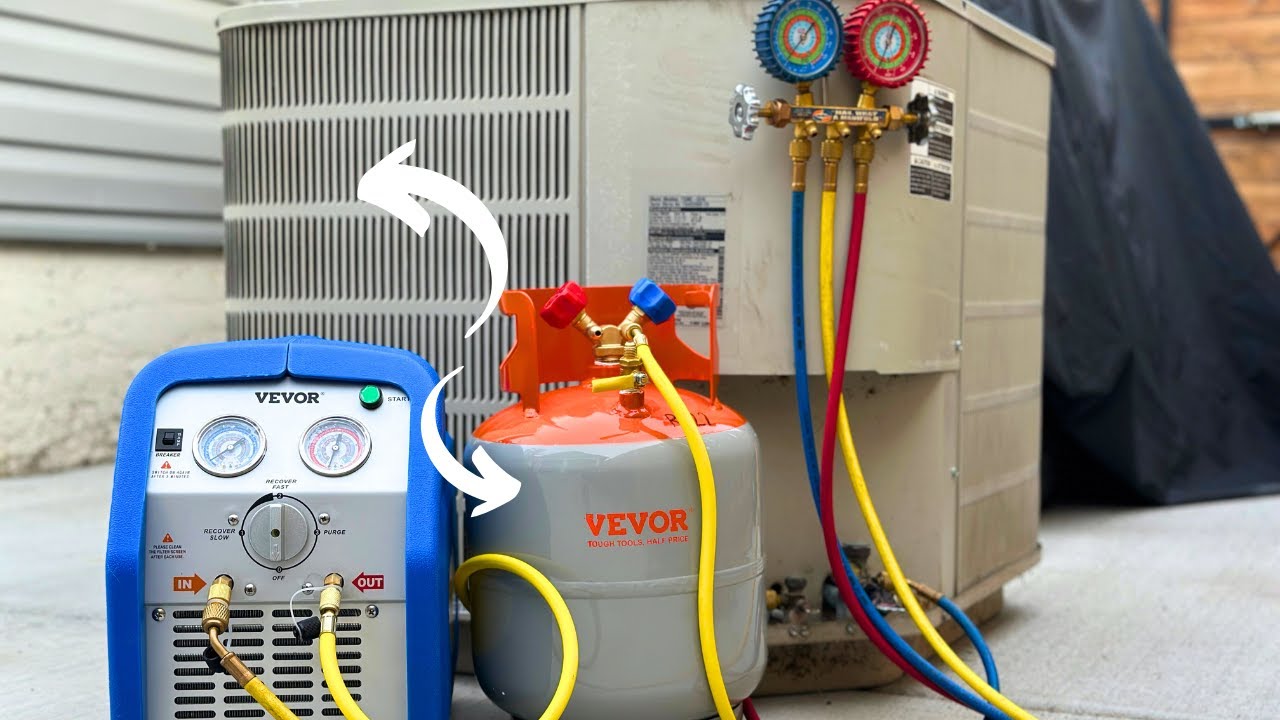Introduction
Mixing r410a with other refrigerants in a recovery cylinder is…:Refrigerants play a critical role in heating, ventilation, and air conditioning (HVAC) systems. Each refrigerant is designed to operate under specific conditions, ensuring optimal performance, energy efficiency, and safety. R410A, a widely used refrigerant in modern HVAC systems, is no exception. However, one important rule in HVAC maintenance and repair is never to mix R410A with other refrigerants in a recovery cylinder.
This article explores the risks, consequences, and regulatory implications of mixing R410A with other refrigerants in a recovery cylinder.
What is R410A?
Composition and Characteristics
R410A is a blend of two hydrofluorocarbon (HFC) refrigerants—difluoromethane (R32) and pentafluoroethane (R125)—used primarily in air conditioning systems. It replaced older refrigerants like R22 due to its higher energy efficiency and lower environmental impact. R410A is a non-ozone-depleting refrigerant, making it a more environmentally friendly option.
Key Properties
- High Pressure: R410A operates at higher pressures compared to many other refrigerants, such as R22.
- Non-Flammable: R410A is considered non-flammable under standard conditions.
- Environmental Impact: Although R410A does not deplete the ozone layer, it has a relatively high global warming potential (GWP), prompting the HVAC industry to search for alternative refrigerants.
The Purpose of a Recovery Cylinder
What is a Recovery Cylinder?
A recovery cylinder is a specially designed container used to safely collect refrigerants from HVAC systems during maintenance, repair, or replacement. The purpose of recovering refrigerants is to prevent their release into the atmosphere, which could contribute to ozone depletion or global warming.
Handling Different Refrigerants
Each recovery cylinder is designed to hold a single type of refrigerant to avoid cross-contamination. Cross-contaminating refrigerants in a recovery cylinder can lead to severe consequences, both for the HVAC system and the environment.
Why Mixing R410A with Other Refrigerants is Dangerous
Chemical Incompatibility
R410A is a precise blend of refrigerants, and its chemical composition is critical for its performance in HVAC systems. Mixing it with other refrigerants can lead to chemical reactions that may compromise the stability and effectiveness of both substances.
Different Operating Pressures
One of the primary reasons mixing R410A with other refrigerants is dangerous is the significant difference in operating pressures between refrigerants. R410A operates at much higher pressures compared to older refrigerants like R22 or R134a.
Impact on HVAC System Efficiency
If mixed refrigerants are accidentally reintroduced into an HVAC system, it could lead to a host of performance issues. The system may not be able to operate efficiently due to improper refrigerant pressures, potentially leading to overheating, poor cooling, or even compressor damage.
Environmental Consequences
Mixing refrigerants not only affects HVAC system performance but also has environmental implications. Many refrigerants, including R410A, have strict regulations surrounding their handling and disposal due to their environmental impact. Mixing refrigerants in a recovery cylinder makes it impossible to properly recycle or reclaim them, potentially resulting in the release of harmful chemicals into the atmosphere. This increases the global warming potential and environmental damage.
Regulatory and Legal Implications
Compliance with EPA Regulations
The U.S. Environmental Protection Agency (EPA) has stringent regulations regarding the handling and disposal of refrigerants, outlined under Section 608 of the Clean Air Act. According to these regulations, technicians must recover refrigerants into dedicated recovery cylinders, ensuring no cross-contamination occurs.
Mixing refrigerants, including R410A, in a recovery cylinder violates these regulations and can result in severe penalties. Fines, suspension of certification, or legal consequences could follow improper handling practices.
Manufacturer Guidelines and Warranties
HVAC manufacturers provide detailed guidelines on the use of refrigerants, including recommendations for using the correct recovery cylinders. Violating these guidelines by mixing refrigerants can void warranties on equipment and may lead to expensive repairs or replacements.
How to Safely Handle R410A Refrigerant
Use Dedicated Recovery Cylinders
Each type of refrigerant should have its own dedicated recovery cylinder to prevent cross-contamination.
Proper Refrigerant Identification
Before recovering any refrigerant from an HVAC system, identify the refrigerant type using proper tools and procedures.
Regular Maintenance of Recovery Equipment
Ensure that your recovery equipment, including cylinders and recovery machines, is regularly maintained and inspected for damage or leaks. Proper maintenance reduces the risk of cross-contamination and ensures safe handling.
Technician Training and Certification
HVAC technicians should be properly trained and certified in refrigerant handling, particularly for newer, high-pressure refrigerants like R410A. Certification programs such as the EPA’s Section 608 Certification ensure that technicians understand the risks and regulations involved in refrigerant handling.
Conclusion
Mixing R410A with other refrigerants in a recovery cylinder is not only dangerous but also illegal under EPA regulations. The risks include chemical incompatibility, differing operating pressures, damage to HVAC systems, and severe environmental consequences. To avoid these risks, technicians must adhere to best practices, including using dedicated recovery cylinders, following manufacturer guidelines, and ensuring proper training and certification. Handling refrigerants safely is essential for protecting the environment, maintaining HVAC system efficiency, and staying compliant with regulatory requirements.

Leave a Reply